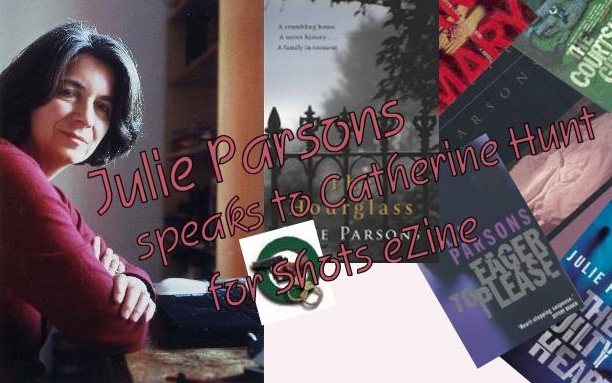

|
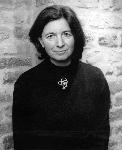
Julie Parsons is the author of five crime novels, all of them psychological dramas. She was born in New Zealand and has lived most of her adult life in Ireland. She has had a varied career – artist's model, typesetter, freelance journalist, radio and television producer – before turning to writing fiction. She lives outside Dublin, by the sea, with her family. Her latest, The Hourglass is, like the others, set in Ireland. Catherine Hunt discovers more about the author.

|
Your publishers tell us that you began writing “when you were in your forties.” Was Mary Mary your first novel or had you been writing long before that? Mary, Mary was my first novel and I had never written anything very much before it. I had always wanted to be a writer – I was one of those kids whose head was always in a book and I had thought that I would seamlessly make the transition from reader to writer. But somehow or another I could never write anything that was any good. I tried a few short stories, but they always seemed artificial and unreal. Then just before my 40th birthday I made a pledge that I would have written a novel by the time I was 45. I joined a writer’s group – six other woman all of whom had been published – and I began to write regularly. My first attempt was an autobiographical story, but I realised that I could never publish it because it was too close to my family story. And also I thought that it was too much of a cliché to write your first book about yourself. So one day when I was on my way to work (I was a TV producer with Irish TV) I got the germ of an idea for a thriller. I worked it into a plot, wrote the first 3 chapters, sent them to an Irish publisher and she offered me a contract for the book. |
|
I’m interested in why you chose crime fiction or did it choose you? You have said that your father’s disappearance at sea when you were a little girl has given you an obsession with loss and the unexpected. Could you tell us a little more about that? I had always loved reading thrillers – a Ruth Rendell, Patricia Highsmith fan – and I thought it would be fun to write one. At that time in the mid 90s, very few people in Ireland were writing thrillers – most were writing either so-called literary fiction or women’s fiction, what’s called now ‘chick-lit’. When I got my idea for Mary, Mary I decided it was too good an opportunity to miss. But although I didn’t intend it to be autobiographical when I had finished it and read it through from start to finish I realised that there were a lot of elements of my life in it. And of course there would have to be because writing comes from somewhere deep inside. And when I continued to write thrillers I began to see that they were fulfilling a very important function in my life. I will never know how and why my father disappeared in the middle of the Pacific Ocean, but I can now see that I can do in my fictional and creative life what I cannot do in my ‘real’ life. I can solve the mystery. I can find out what happens. I can make it all right in the end. Even if I can’t do that with the mystery of my father’s disappearance. And I think that’s one of the main reasons why my stories are mysteries. |
|

|
In The Hourglass you show three generations of a family and you concentrate on mothers and daughters, love and estrangement, remembering and being unforgiving. You have written as well about brothers, adopted brothers, fathers and foster parents. The heart of Eager to Please is the bitterness that divides two brothers. Do you begin from there, from fractured families? I don’t set out to write about issues or situations. I start with a character and build from there. But perhaps because my family is incomplete – my father missing and never really knowing what happened to him – I understand how difficult that is and how damaged people can be by losing a mother or father, either by death or by separation or divorce. |
|
Revenge is a constant theme, revenge enacted by or on behalf of, usually, female victims. The Guilty Heart is perhaps the only one of your novels where revenge has not been at the heart of the story although even there, at the end, Cassidy punishes Chris in revenge for his dreadful crime. Your heroines and heroes believe in punishment: torture for torture, prison for prison, deprivation for deprivation, starvation for starvation. Where does that come from? What a difficult question to answer! I sometimes think people must have an image of me as some kind of a vigilante! Actually I do believe in the rule of law – we have seen in Northern Ireland what happens when groups of people take the law into their own hands and it isn’t pretty. I am, however, very conscious that the legal concept of justice is not the same as the understanding of justice that you and I have. And I think that the law often fails victims. So, while I don’t really approve of taking revenge yourself, I think it is very understandable when someone wants to. |
|
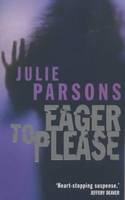
|
In Eager to Please and also in The Hourglass you give detailed descriptions of prisons, not just the visiting rooms, but also the physical suffocation, the view or rather lack of view from the cell windows, the smell, the van that transfers prisoners from court to the gaol. You explain prison routine, the rules governing lifers, the sad little stories of individual women. Do you visit prisons? Have you taught there like Grace in The Hourglass? When I was doing the research for Eager to Please I got permission from the Governor of Mountjoy Prison in Dublin to go into the women’s prison and talk to some of the women and the officers about their lives. It was very interesting, although the place was physically very oppressive and frightening. The women’s prison has a very good school and the head teacher asked me if I would do some writing workshops with some of the women. I was very happy to do this and was then invited to make a speech at the opening of the new prison library. The classes I gave were much more informal than the one’s that Grace teaches but they did give me the background knowledge to write about the prison. |
|
Could we talk about your detectives? You seem to have avoided the usual partnerships of seasoned inspector and faithful sergeant. It’s as though you deliberately avoid the police procedural novel. They are almost all good people, often flawed, often experiencing problems in their private life but, at times, they disobey the usual rules. It’s as though they rate natural justice above the law. In Mary Mary, Mcloughlin subverts the course of the law in the interest of justice. In The Guilty Heart, Min, a detective, again breaks the law when she hands over the files of the case to Cassidy who is himself a suspect. I am not particularly interested in the straight forward ‘police procedural’ novel because I am not particularly interested in writing a straight forward ‘who dunnit’. I approach my police characters in the same way as I approach any other character. I want them to be well rounded, interesting, and most definitely not perfect. I see no reason why they shouldn’t have lots of interests outside their job, and be capable of loving and being loved. They can also think and act for themselves. I think that policemen and women, like other people in other jobs are perfectly capable of breaking the rules and acting in a way that is not strictly speaking according to the rules. But this makes them more interesting as characters. I really enjoyed creating Min Sweeney in The Guilty Heart. Although the Irish police force prides itself on its egalitarianism, inevitably its women members are patronised and belittled by its male members, but I thought Min managed to cope well with all the demands made on her. My favourite policemen is Michael McLoughlin, from Mary, Mary. |
|
|
Could you tell us about how important place is to you? Is that where you start from? You are so good at suggesting both atmosphere and precisely detailed settings, two places in particular: New Zealand and Dublin. In Mary,Mary, mother and daughter go to New Zealand when Mary is a tiny baby. They come back because Margaret’s grandmother is ill but Margaret goes back there when she has finished what she must do. The book jackets explain that you too know both countries. Can you imagine writing a novel set in New Zealand? At the moment I can’t really imagine setting a book completely in New Zealand because I have only been back there once since I left in 1963. But if I ever spent some time there I’m sure I would write about it. I am very much motivated by the intensity of my feelings for particular places – I have wonderful childhood memories of the little town just outside Auckland where I grew up. And of course I love Ireland very much and cannot imagine wanting to recreate my favourite places in my novels. |
|
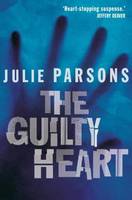
|
Your characters know and love Dublin. You have them standing in front of a favourite picture in the museum, watching the sunsets, following the fishing boats, noting the rescue of houses that were once divided into squalid bed sits, houses with high ceilinged rooms and beautiful gardens. And your characters remark on the changes to the city as Dublin’s prosperity brings raucous crowds of young people spilling out on to the pavements. I love Dublin very much. It has changed hugely since I came to live here in 1963. Then it was very run down, poverty stricken, still virtually a 19th century city. Now it is bright, smart, fashionable and very wealthy. I get great pleasure out of describing it to those who have never been here – and now that my books are translated into 17 languages many of my readers don’t know it personally. Dubliners are lucky to live in a city which is still so close to the natural world – the river Liffey leads out into the sea, the mountains are visible from the centre of the city, the wind blows constantly and brings a sense of freshness into the city too. I hope that people who read my books will be inspired to visit the city. In fact my Swedish publisher, Bonniers, brought a group of members of their book club to the city a couple of years ago and they had a wonderful time! |
|
Your writing is, at times poetic with lyrical passages side by side, in a shocking way, with the horrors you depict. You lovingly describe children, snatches of songs, wineglasses with the imprint of lips, pink roses shedding their petals, the scent and seeds of lavender, the wide horizon, the sparkling sea. Is this stark contrast deliberate? I don’t think it is deliberate, but I am aware that beauty and ugliness can exist simultaneously and side by side. I also love to write about the things I find beautiful. But mostly what I want to do is to create a world that is as real to the reader as it is to me. I want them to feel, smell, taste, sense, experience everything that I experience. I want the wind to touch their faces, the cold to make the hairs stand up on their arms, salt water to make their eyes sting, to feel sand or earth between their toes. It is very important to me to write in as much detail as I can about everything in the world I am creating so that the reader will be drawn completely into it. |
|
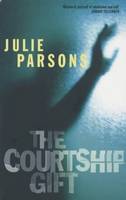
|
Each book so far has been a stand alone. Will there be sequels? Might there be a series? Could Donnelly, the detective in Eager to Please go back to the hop fields of Kent to seek out Elizabeth and find Rachel there? Could someone buy the isolated cottage you describe in Mary Mary and find a skeleton and a trace of Mcloughlin? And what about the shoes left by a lake? Min almost warns us that Roisin Goulding could come back. You have her saying, “Watch out, watch out.” Funny you should raise this. I have just started a new book, provisionally titled ‘I Saw You’. And I have brought back two characters from Mary, Mary. Detective Inspector Michael McLoughlin and Margaret Mitchell. So, I wonder what is going to happen to them. . … |
|
Julie Parsons Bibilography
|

| Webmaster: Tony 'Grog' Roberts [Contact] |